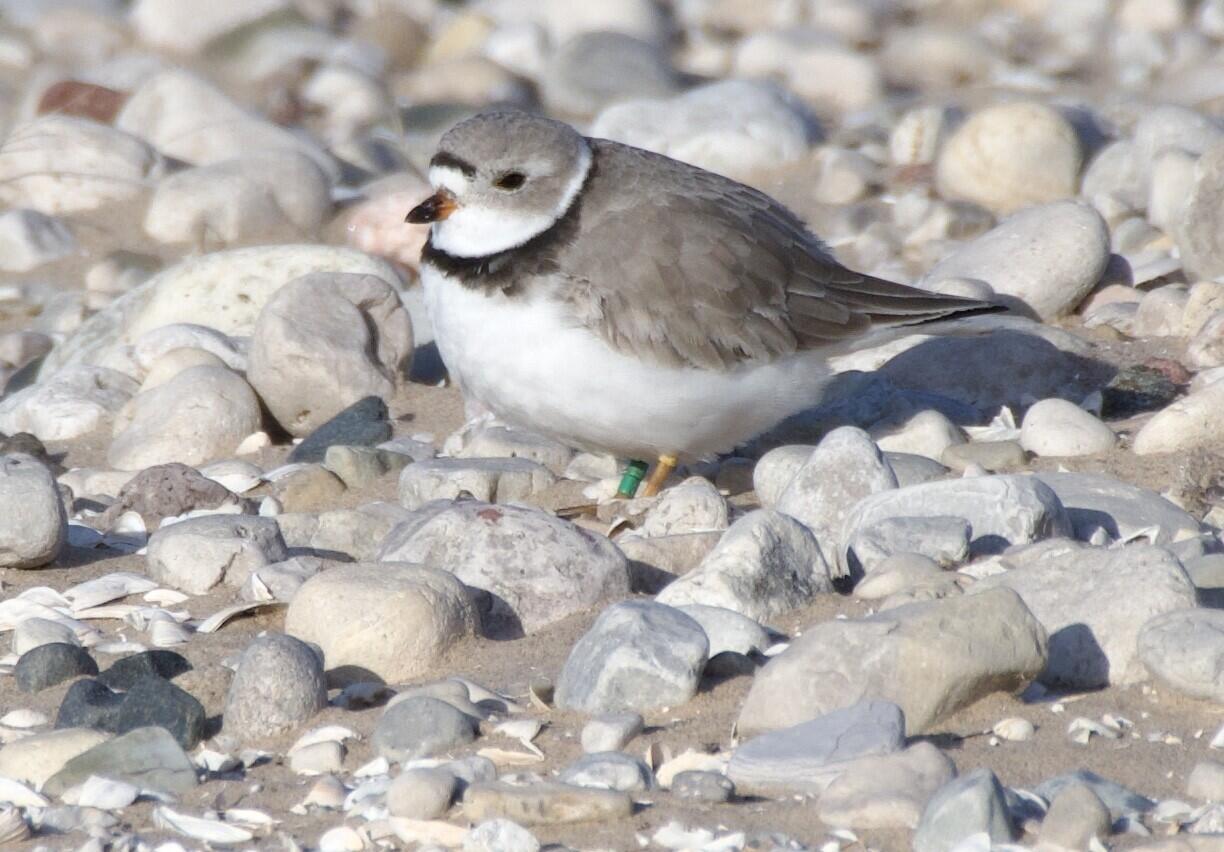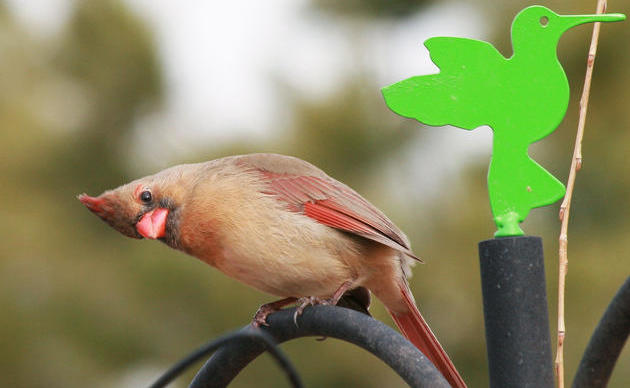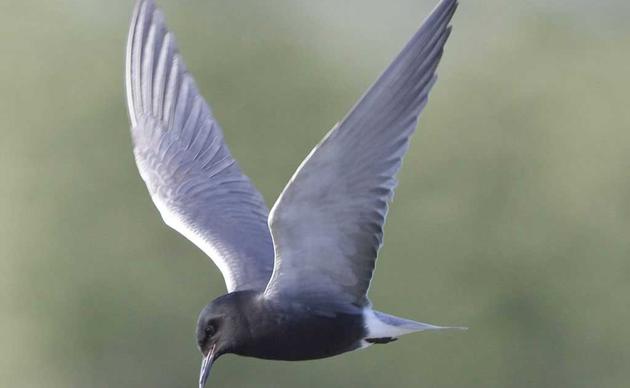GREEN BAY, WI (April 24, 2025) – As Green Bay gears up to host the 2025 NFL Draft, another long-awaited homecoming has locals buzzing—the return of the Great Lakes Piping Plovers. Most notably “Ms. Packer,” a federally endangered Great Lakes Piping Plover, returned to her nesting grounds at the Cat Island Restoration Chain in Lower Green Bay, which sits a few miles northeast from Lambeau Field.
With Green Bay in the national spotlight this week, the return of these rare shorebirds is a powerful reminder of the region’s natural heritage—and the role local communities play in protecting it.
On the morning of April 13, volunteer monitors spotted the first two Piping Plovers to arrive at the Cat Island Restoration Chain in 2025, fresh off their migration from the Atlantic or Gulf Coast. One of them was Ms. Packer, a veteran breeder who has nested at Cat Island since 2019.
Ms. Packer had returned to the site in April 2024 for what would have been her seventh breeding season but mysteriously vanished after about two weeks. Despite extensive monitoring efforts across the Great Lakes and wintering grounds by volunteers, researchers, birders and photographers, she was not seen again in 2024. Her unexplained disappearance left many local bird monitors fearing the worst—that she had fallen victim to a predator or passed due to natural causes. Her exact age is unknown, as she was first detected without identifying color bands.
Her unexpected reappearance this April was cause for celebration, officially marking the start of the 2025 Piping Plover breeding season in Green Bay—just as the NFL Draft kicks off a few miles away. Since her return, Ms. Packer has been joined by two other Piping Plovers, including a male with whom she has paired. Conservationists are hopeful that this nesting season will add to her impressive record of 10 fledged young produced at Cat Island over the years. Each new fledged young is critical to future success of the population for this endangered species.

“The return of Ms. Packer is a hopeful sign, not only for Green Bay’s Piping Plovers but for the recovery of this species across the Great Lakes,” said Tom Prestby, Conservation Manager for Audubon Great Lakes. “As we celebrate football’s biggest names arriving in town, let’s also celebrate the comeback of one of our beloved endangered Piping Plovers.”
Audubon Great Lakes staff and volunteer monitors work with U.S. Fish and Wildlife Service, Wisconsin Department of Natural Resources, and several other partners to monitor and protect nesting activities in lower Green Bay, Wisconsin. Through this collaborative effort last season, 10 Piping Plover fledglings were successfully produced at two breeding sites—the the Cat Island Restoration Chain and Longtail Point.
To help track movement, survival, and reproductive success of endangered Piping Plovers, the U.S. Fish and Wildlife Service and the University of Minnesota Piping Plover Banding Team coordinate efforts to place small, colored bands on the legs of each bird. These bands serve as a kind of avian ID system, allowing biologists, bird watchers, and community scientists to identify and monitor individual plovers as they migrate between their breeding grounds in the Great Lakes and their wintering habitats, which are mostly concentrated along the coasts of the Carolinas, Georgia and Florida. Each combination of colors and numbers is unique and essential for tracking recovery efforts.
"Ms. Packer sports a yellow band on her left leg and two green bands on her right leg—a nod to the Green Bay Packers,” added Prestby. “Along with an orange flag and a numeric identifier used for all Great Lakes Piping Plovers, her bands help tell the story of her individual successes and the broader comeback of this remarkable species.”
Thanks to recovery efforts funded by the Great Lakes Restoration Initiative (GLRI) and carried out by members and affiliates of the Great Lakes Piping Plover Conservation Team, these shorebirds were able to defy the odds, and make an astounding comeback across the Great Lakes region. Last year the Great Lakes shoreline hosted 81 breeding pairs, the greatest number of pairs since listing under the Endangered Species Act, and about halfway to the U.S. Fish and Wildlife Service’s recovery goal of 150 Great Lakes Piping Plover breeding pairs.
Audubon Great Lakes, U.S. Fish and Wildlife Service and partners are reminding the public to Share the Shore with these endangered birds:
- Give plovers space by observing from a distance
- Leash pets near nesting areas
- Dispose of trash properly to prevent predators
- Stay out of marked nesting areas and avoid disturbing the dunes
Take Action by telling Congress to fully fund the Great Lakes Restoration Inititive: https://act.audubon.org/a/nas-glri-2025
Help Piping Plovers by Pledging to Share the Shore here: http://https://act.audubon.org/a/pledge-protect-great-lakes-piping-plovers
To learn more about Audubon Great Lakes, please visit gl.audubon.org.
About Audubon Great Lakes
The National Audubon Society protects birds and the places they need, today and tomorrow. Audubon works throughout the Americas using science, advocacy, education and on-the-ground conservation. State programs, nature centers, chapters and partners give Audubon an unparalleled wingspan that reaches millions of people each year to inform, inspire and unite diverse communities in conservation action. A nonprofit conservation organization since 1905, Audubon believes in a world in which people and wildlife thrive. Audubon Great Lakes is a regional office of Audubon, learn more at gl.audubon.org.
Media Contact:
Nicole Minadeo
Nicole.minadeo@audubon.org
419-308-4846




